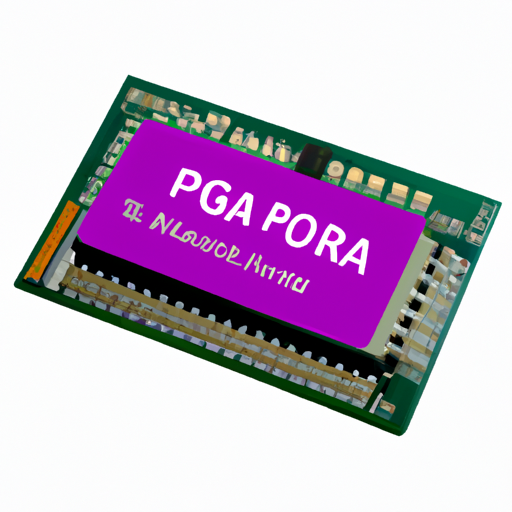
Field Programmable Gate Arrays (FPGAs) are versatile integrated circuits that can be programmed and reconfigured to perform a wide range of tasks. These modules are commonly used in industries such as telecommunications, automotive, aerospace, and more. With the rapid advancements in technology, the latest FPGA modules are equipped with advanced features and specifications to meet the growing demands of various applications.One of the key features of the latest FPGA modules is their high processing power. These modules are designed with advanced architectures that allow for faster processing speeds and improved performance. With the ability to handle complex algorithms and data processing tasks, the latest FPGA modules are ideal for applications that require real-time processing and low latency.In addition to high processing power, the latest FPGA modules also offer increased flexibility and scalability. These modules can be easily reprogrammed and reconfigured to adapt to changing requirements and specifications. This flexibility allows for quick and efficient updates and modifications, making FPGA modules a cost-effective solution for a wide range of applications.Another important feature of the latest FPGA modules is their high level of integration. These modules are equipped with a wide range of peripherals and interfaces, including Ethernet, USB, HDMI, and more. This integration allows for seamless connectivity with other devices and systems, making it easier to integrate FPGA modules into existing infrastructure.The latest FPGA modules also offer advanced security features to protect sensitive data and prevent unauthorized access. These modules are equipped with encryption capabilities, secure boot options, and other security measures to ensure the integrity and confidentiality of data.Furthermore, the latest FPGA modules are designed with energy efficiency in mind. These modules are optimized for low power consumption, making them ideal for applications that require long battery life or operate in remote locations with limited power sources.Overall, the latest FPGA modules offer a wide range of advanced features and specifications that make them ideal for a variety of applications. With high processing power, flexibility, scalability, integration, security, and energy efficiency, these modules are a versatile and cost-effective solution for industries looking to leverage the power of FPGA technology.

The verification industry plays a crucial role in ensuring the accuracy and authenticity of information in various sectors, including finance, healthcare, education, and more. With the rise of digitalization and the increasing amount of data being generated every day, the need for reliable verification services has never been more important.The verification industry encompasses a wide range of services, including background checks, identity verification, document verification, and more. These services help businesses and organizations make informed decisions, mitigate risks, and prevent fraud. In recent years, the verification industry has seen significant growth and evolution, driven by technological advancements and changing regulatory requirements.One of the key trends shaping the verification industry is the increasing adoption of automation and artificial intelligence (AI) technologies. These technologies have enabled verification service providers to streamline their processes, improve accuracy, and enhance efficiency. For example, AI-powered algorithms can quickly analyze large volumes of data to verify identities or detect fraudulent activities, saving time and resources for businesses.Another important trend in the verification industry is the growing emphasis on data privacy and security. With the implementation of regulations such as the General Data Protection Regulation (GDPR) and the California Consumer Privacy Act (CCPA), businesses are under increasing pressure to protect the personal information of their customers. Verification service providers must adhere to strict data protection standards to ensure the confidentiality and integrity of the information they handle.The COVID-19 pandemic has also had a significant impact on the verification industry. As more businesses transitioned to remote work environments, the demand for online verification services surged. For example, remote identity verification solutions became essential for businesses to onboard new customers or employees without physical contact. The pandemic accelerated the digital transformation of many industries, including verification, leading to the adoption of new technologies and processes.In addition to technological advancements and regulatory changes, the verification industry is also facing challenges related to fraud and cybersecurity threats. As cybercriminals become more sophisticated in their tactics, businesses must stay vigilant and invest in robust verification solutions to protect themselves and their customers. Fraudulent activities such as identity theft, account takeover, and phishing scams pose a significant risk to businesses, highlighting the importance of reliable verification services.Looking ahead, the verification industry is poised for further growth and innovation. As businesses continue to digitize their operations and rely on data-driven decision-making, the demand for accurate and reliable verification services will only increase. Service providers will need to adapt to changing market dynamics, invest in cutting-edge technologies, and prioritize data security to stay competitive in the evolving landscape.In conclusion, the verification industry plays a critical role in ensuring trust and transparency in today's digital world. With the rapid pace of technological advancement, changing regulatory requirements, and evolving fraud threats, verification service providers must stay ahead of the curve to meet the needs of their clients and protect sensitive information. By embracing innovation, prioritizing data security, and adapting to market trends, the verification industry is well-positioned for continued success in the years to come.
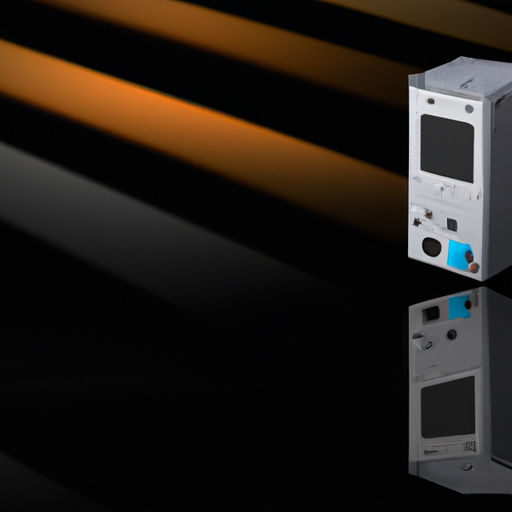
Qi Dian is a popular Chinese online platform that offers a wide range of services, including e-commerce, social networking, and entertainment. One of the key features of Qi Dian is its verification generator, which allows users to verify their accounts and access various services on the platform. In this article, we will explore some of the popular Qi Dian verification generator product models that are currently available in the market.1. Qi Dian Verification Generator V1.0The Qi Dian Verification Generator V1.0 is one of the earliest models of verification generators released by the platform. It is a compact and lightweight device that can be easily carried around and used on the go. The V1.0 model is equipped with a high-quality camera and advanced facial recognition technology, allowing users to verify their accounts quickly and securely. The device also features a user-friendly interface, making it easy for users to navigate and operate.2. Qi Dian Verification Generator ProThe Qi Dian Verification Generator Pro is a more advanced model that offers enhanced features and capabilities. This model is designed for users who require a higher level of security and verification accuracy. The Pro model comes with a larger display screen, improved camera resolution, and faster processing speed. It also includes additional security features such as fingerprint recognition and voice authentication, making it one of the most secure verification generators available on the market.3. Qi Dian Verification Generator MiniFor users who prefer a more portable and compact verification generator, the Qi Dian Verification Generator Mini is an ideal choice. This model is designed to be small and lightweight, making it easy to carry around and use on the go. Despite its compact size, the Mini model still offers high-quality verification capabilities, including facial recognition and fingerprint authentication. The device is also equipped with a long-lasting battery, ensuring that users can verify their accounts without worrying about running out of power.4. Qi Dian Verification Generator PlusThe Qi Dian Verification Generator Plus is a premium model that offers the most advanced features and capabilities. This model is designed for users who require the highest level of security and verification accuracy. The Plus model comes with a larger display screen, enhanced camera resolution, and faster processing speed. It also includes additional security features such as iris recognition and biometric authentication, making it one of the most secure verification generators available on the market.5. Qi Dian Verification Generator LiteThe Qi Dian Verification Generator Lite is a budget-friendly model that offers basic verification capabilities at an affordable price. This model is designed for users who require a simple and straightforward verification process. The Lite model features a compact design, basic camera functionality, and easy-to-use interface. While it may not have the advanced features of other models, the Lite model is still a reliable option for users who need a basic verification generator for their Qi Dian accounts.In conclusion, the Qi Dian verification generator product models mentioned above are some of the popular options available on the market. Whether you are looking for a compact and portable device or a premium model with advanced features, there is a verification generator available to suit your needs. With the increasing importance of account security and verification in today's digital age, investing in a reliable verification generator is essential for ensuring the safety and integrity of your Qi Dian account.
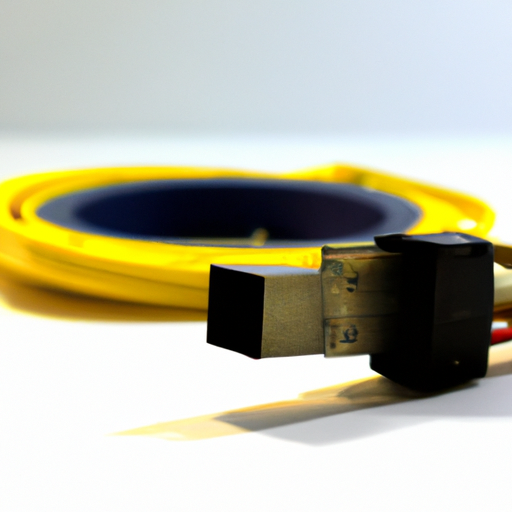
Hot insertion controllers are a type of electronic device that allows for the insertion and removal of components or modules from a system without having to power down the entire system. This technology offers a number of advantages for both manufacturers and end-users, making it a popular choice for a wide range of applications.One of the key advantages of hot insertion controllers is the ability to perform maintenance or upgrades on a system without disrupting its operation. This can be particularly useful in mission-critical applications where downtime is not an option. By allowing components to be swapped out while the system is still running, hot insertion controllers can help to minimize disruptions and ensure that the system remains operational at all times.Another advantage of hot insertion controllers is the flexibility they offer in terms of system design and configuration. With hot insertion capabilities, manufacturers can design systems with modular components that can be easily swapped out or upgraded as needed. This can help to extend the lifespan of a system and make it easier to adapt to changing requirements or technologies.Hot insertion controllers also offer benefits in terms of cost savings. By allowing for easier maintenance and upgrades, these controllers can help to reduce the overall cost of ownership of a system. In addition, the modular design enabled by hot insertion controllers can help to reduce the cost of manufacturing and assembly, as components can be easily added or removed as needed.In addition to these practical advantages, hot insertion controllers also offer a number of technical benefits. For example, these controllers can help to prevent damage to components by ensuring that they are properly inserted and removed. This can help to extend the lifespan of components and reduce the risk of system failures.Hot insertion controllers can also help to improve system reliability by allowing for components to be replaced quickly in the event of a failure. This can help to minimize downtime and ensure that the system remains operational at all times. In addition, hot insertion controllers can help to simplify troubleshooting and diagnostics, as components can be easily swapped out to isolate and address issues.Overall, hot insertion controllers offer a number of advantages for manufacturers and end-users alike. By allowing for easier maintenance, upgrades, and system design, these controllers can help to improve system reliability, flexibility, and cost-effectiveness. As a result, hot insertion controllers are a popular choice for a wide range of applications, from industrial automation to telecommunications to data centers.
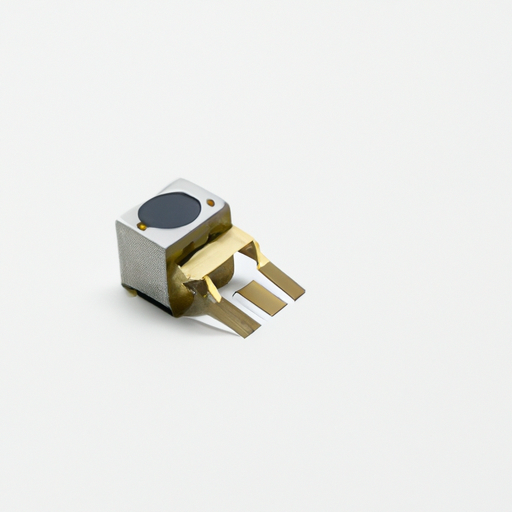
Digital potentiometers, also known as digipots, are electronic components that mimic the functionality of traditional mechanical potentiometers but with the added benefits of digital control and programmability. These devices are widely used in a variety of applications across different industries due to their versatility, reliability, and ease of use.One of the main application directions of digital potentiometers is in the field of audio equipment. In audio systems, potentiometers are used to control volume, tone, and other parameters. Digital potentiometers offer several advantages over their mechanical counterparts, such as better precision, faster response times, and the ability to store and recall settings. This makes them ideal for use in high-end audio equipment, such as amplifiers, mixers, and equalizers.Another common application of digital potentiometers is in instrumentation and measurement systems. These devices are used to calibrate and adjust sensors, transducers, and other components in order to ensure accurate and reliable measurements. Digital potentiometers can be easily programmed to provide precise adjustments, making them essential tools in industries such as aerospace, automotive, and healthcare.Digital potentiometers are also widely used in industrial automation and control systems. These devices can be used to adjust parameters such as voltage, current, and resistance in various industrial processes. Digital potentiometers offer greater flexibility and control compared to traditional potentiometers, making them ideal for use in applications such as motor control, temperature regulation, and lighting control.In the field of telecommunications, digital potentiometers are used in a variety of applications, such as signal conditioning, impedance matching, and line balancing. These devices can be easily integrated into communication systems to provide precise adjustments and fine-tuning of signals. Digital potentiometers are also used in networking equipment, such as routers and switches, to control signal levels and optimize performance.Digital potentiometers are also commonly used in consumer electronics, such as smartphones, tablets, and wearable devices. These devices often require precise adjustments of parameters such as brightness, volume, and screen contrast. Digital potentiometers provide a compact and cost-effective solution for implementing these adjustments in consumer electronics products.In the automotive industry, digital potentiometers are used in a variety of applications, such as climate control systems, audio systems, and power seats. These devices can be easily integrated into the vehicle's electronics to provide precise adjustments and customization options for the driver and passengers. Digital potentiometers are also used in automotive testing and calibration equipment to ensure the accuracy and reliability of vehicle components.Overall, digital potentiometers have a wide range of applications across different industries and sectors. These devices offer numerous advantages over traditional potentiometers, such as better precision, faster response times, and programmability. As technology continues to advance, digital potentiometers are expected to play an increasingly important role in various applications, from audio equipment to industrial automation to consumer electronics.

When it comes to compiling code, there are several mainstream models that are commonly used in the software development industry. These models help developers to efficiently convert their source code into executable programs that can run on various platforms. In this article, we will explore some of the most popular models of compiling code and discuss their advantages and disadvantages.1. Single-pass compilation model:The single-pass compilation model is one of the simplest and most straightforward approaches to compiling code. In this model, the compiler reads the source code line by line and generates the corresponding machine code in a single pass. This means that the compiler does not need to make multiple passes over the source code to generate the final executable.One of the main advantages of the single-pass compilation model is its simplicity and efficiency. Since the compiler only needs to read the source code once, it can generate the machine code quickly and with minimal memory usage. This makes the single-pass model ideal for compiling small to medium-sized programs.However, the single-pass compilation model has some limitations. For example, it may not be able to handle complex code structures or dependencies between different parts of the program. In such cases, the compiler may need to make multiple passes over the source code, which can slow down the compilation process.2. Two-pass compilation model:The two-pass compilation model is a more sophisticated approach to compiling code that involves making two passes over the source code. In the first pass, the compiler reads the source code and generates an intermediate representation of the program. In the second pass, the compiler uses this intermediate representation to generate the final machine code.One of the main advantages of the two-pass compilation model is its ability to handle complex code structures and dependencies. By generating an intermediate representation of the program in the first pass, the compiler can analyze the code more effectively and optimize the generation of machine code in the second pass.However, the two-pass compilation model can be more time-consuming and memory-intensive compared to the single-pass model. Since the compiler needs to make two passes over the source code, it may take longer to generate the final executable, especially for large programs.3. Just-in-time (JIT) compilation model:The just-in-time (JIT) compilation model is a dynamic approach to compiling code that involves generating machine code at runtime, just before the program is executed. In this model, the compiler translates the source code into machine code on-the-fly, as needed by the program.One of the main advantages of the JIT compilation model is its ability to optimize the performance of the program at runtime. By generating machine code dynamically, the compiler can take into account the current state of the program and make optimizations that are not possible with traditional ahead-of-time compilation.However, the JIT compilation model can introduce overhead and latency to the execution of the program. Since the compiler needs to generate machine code on-the-fly, there may be a delay before the program can start running. Additionally, the generated machine code may not be as efficient as code generated by ahead-of-time compilation.4. Ahead-of-time (AOT) compilation model:The ahead-of-time (AOT) compilation model is a traditional approach to compiling code that involves generating machine code before the program is executed. In this model, the compiler translates the source code into machine code in advance, typically during the build process.One of the main advantages of the AOT compilation model is its ability to produce highly optimized machine code that can be executed quickly and efficiently. By generating machine code ahead of time, the compiler can perform extensive optimizations and produce code that is tailored to the target platform.However, the AOT compilation model can be less flexible compared to the JIT compilation model. Since the machine code is generated in advance, the compiler may not be able to take into account the runtime state of the program and make dynamic optimizations. This can result in less efficient code in some cases.In conclusion, there are several mainstream models of compiling code, each with its own advantages and disadvantages. The choice of compilation model depends on the specific requirements of the program and the target platform. Developers should carefully consider the trade-offs between simplicity, efficiency, and flexibility when selecting a compilation model for their projects.
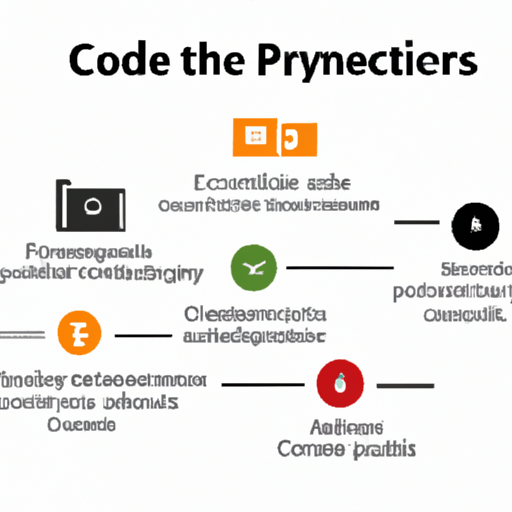
Compile code is a software development tool that allows developers to write, edit, and compile code in various programming languages. It is a crucial tool for developers as it helps them to streamline the coding process and ensure that their code is error-free and runs smoothly. Compile code offers a wide range of features and functionalities that cater to different programming needs and requirements. In this article, we will explore the key product categories of Compile code and how they can benefit developers in their coding projects.1. Code editing and writing tools: One of the primary features of Compile code is its code editing and writing tools. These tools provide developers with a user-friendly interface where they can write and edit code in various programming languages such as Java, C++, Python, and more. The code editing tools offer features like syntax highlighting, auto-completion, and code formatting, which help developers to write clean and error-free code. Additionally, developers can also customize the editor settings to suit their coding preferences and requirements.2. Code compilation and execution: Another key product category of Compile code is its code compilation and execution tools. These tools allow developers to compile their code and run it to check for errors and bugs. Compile code supports multiple programming languages and compilers, making it easy for developers to compile code in different languages. The code execution tools provide developers with real-time feedback on their code, helping them to identify and fix errors quickly. Additionally, developers can also debug their code using the debugging tools provided by Compile code.3. Version control and collaboration: Compile code also offers version control and collaboration tools that help developers to work together on coding projects. The version control tools allow developers to track changes made to the code, revert to previous versions, and merge code changes from different team members. This ensures that the codebase remains organized and up-to-date. The collaboration tools enable developers to work together on coding projects in real-time, share code snippets, and communicate with team members. This fosters collaboration and teamwork among developers, leading to more efficient and productive coding projects.4. Code analysis and optimization: Compile code provides code analysis and optimization tools that help developers to improve the performance and efficiency of their code. The code analysis tools analyze the code for potential errors, inefficiencies, and security vulnerabilities, providing developers with suggestions on how to optimize their code. Developers can also use the code optimization tools to improve the speed and performance of their code, making it more efficient and scalable. This ensures that the code runs smoothly and meets the desired performance requirements.5. Integration with other tools and services: Compile code integrates with other tools and services that developers use in their coding projects. This includes integration with version control systems like Git, project management tools like Jira, and cloud services like AWS and Azure. This integration allows developers to streamline their workflow, automate repetitive tasks, and collaborate with team members more effectively. Developers can also customize the integration settings to suit their specific requirements and preferences, making it easy to integrate Compile code with their existing tools and services.In conclusion, Compile code offers a comprehensive set of product categories that cater to the diverse needs and requirements of developers. From code editing and writing tools to code compilation and execution tools, version control and collaboration tools, code analysis and optimization tools, and integration with other tools and services, Compile code provides developers with everything they need to write, edit, compile, and optimize code efficiently. By using Compile code, developers can streamline their coding process, improve code quality, and collaborate with team members more effectively, leading to more successful and productive coding projects.
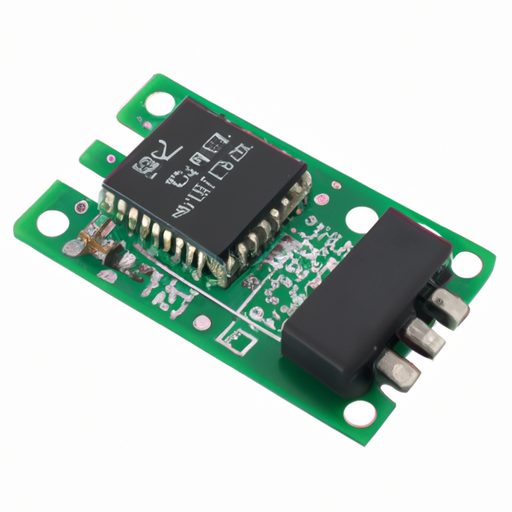
DC-DC switch controller devices are essential components in modern electronic devices, providing efficient power conversion and regulation. These devices come in various models and configurations, each catering to different requirements and applications. In this article, we will explore the purchasing models for the latest DC-DC switch controller device components.1. Single-Channel vs. Multi-Channel ControllersOne of the primary considerations when purchasing a DC-DC switch controller device is the number of channels it supports. Single-channel controllers are suitable for applications that require a single output voltage, while multi-channel controllers are ideal for applications that need multiple output voltages. The latest DC-DC switch controller devices offer both single-channel and multi-channel options, allowing designers to choose the right configuration for their specific needs.2. Programmable vs. Fixed Output VoltageAnother important factor to consider when purchasing a DC-DC switch controller device is whether the output voltage is programmable or fixed. Programmable controllers allow designers to adjust the output voltage dynamically, making them versatile and adaptable to different requirements. On the other hand, fixed output voltage controllers offer simplicity and ease of use, making them suitable for applications with stable voltage requirements. The latest DC-DC switch controller devices come in both programmable and fixed output voltage options, providing flexibility for designers.3. Synchronous vs. Non-Synchronous ControllersSynchronous DC-DC switch controller devices use synchronous rectification to improve efficiency and reduce power losses, making them ideal for high-performance applications. Non-synchronous controllers, on the other hand, are simpler and more cost-effective, making them suitable for low-power applications. The latest DC-DC switch controller devices offer both synchronous and non-synchronous options, allowing designers to choose the right configuration based on their power requirements.4. Integrated vs. External ComponentsSome DC-DC switch controller devices come with integrated components such as MOSFETs, inductors, and capacitors, while others require external components for operation. Integrated controllers offer a compact and simplified solution, reducing the need for additional components and simplifying the design process. External component controllers, on the other hand, provide flexibility and customization options, allowing designers to optimize the performance of the device for their specific requirements. The latest DC-DC switch controller devices come in both integrated and external component options, catering to a wide range of design preferences.5. Efficiency and Power HandlingEfficiency and power handling are crucial factors to consider when purchasing a DC-DC switch controller device. High-efficiency controllers help reduce power losses and improve overall system performance, making them ideal for energy-efficient applications. Controllers with high power handling capabilities can support higher output currents and voltages, making them suitable for high-power applications. The latest DC-DC switch controller devices offer improved efficiency and power handling capabilities, allowing designers to optimize the performance of their systems.6. Advanced Features and FunctionalityThe latest DC-DC switch controller devices come with a range of advanced features and functionality, such as voltage tracking, current limiting, and fault protection mechanisms. These features help improve system reliability, performance, and safety, making them essential for modern electronic devices. Designers can choose from a variety of advanced features based on their specific requirements, ensuring that their systems operate efficiently and reliably.In conclusion, the purchasing models for the latest DC-DC switch controller device components offer a wide range of options and configurations to cater to different requirements and applications. Designers can choose from single-channel or multi-channel controllers, programmable or fixed output voltage options, synchronous or non-synchronous configurations, integrated or external component designs, high-efficiency and high-power handling capabilities, and advanced features and functionality. By selecting the right configuration based on their specific needs, designers can optimize the performance of their systems and ensure reliable operation.
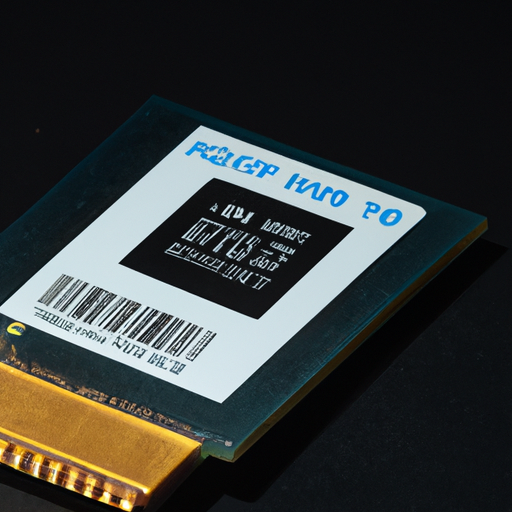
Hot spot UART universal asynchronous receiver transmitter models are essential components in many electronic devices, allowing for the seamless transfer of data between different devices. These models come in a variety of configurations and price points, making them accessible to a wide range of consumers. In this article, we will explore the different features and price points of hot spot UART universal asynchronous receiver transmitter models, helping you make an informed decision when purchasing one for your electronic device.The price of hot spot UART universal asynchronous receiver transmitter models can vary depending on the brand, features, and specifications of the model. Generally, these models can range from $10 to $50, with some high-end models costing upwards of $100. The price of the model will depend on factors such as the data transfer speed, number of ports, and compatibility with different devices.One of the most popular hot spot UART universal asynchronous receiver transmitter models is the FTDI USB to UART converter, which is priced at around $15. This model is widely used in the electronics industry for its reliable performance and compatibility with a wide range of devices. It features a data transfer speed of up to 3 Mbps and comes with a USB 2.0 interface for easy connectivity.Another popular hot spot UART universal asynchronous receiver transmitter model is the Silicon Labs CP2102 USB to UART bridge, which is priced at around $10. This model is known for its compact size and high data transfer speed of up to 1 Mbps. It is compatible with both Windows and Mac operating systems, making it a versatile option for many users.For those looking for a more advanced hot spot UART universal asynchronous receiver transmitter model, the FTDI FT232RL USB to UART converter is a popular choice. Priced at around $20, this model offers a data transfer speed of up to 12 Mbps and features a USB 2.0 interface for fast and reliable connectivity. It is compatible with a wide range of devices, making it a versatile option for many electronic projects.In addition to these popular models, there are also high-end hot spot UART universal asynchronous receiver transmitter models available on the market. These models offer advanced features such as higher data transfer speeds, multiple ports, and compatibility with a wide range of devices. While these models may be more expensive, they are often worth the investment for those who require high-performance data transfer capabilities.Overall, the price of hot spot UART universal asynchronous receiver transmitter models can vary depending on the brand, features, and specifications of the model. Whether you are looking for a basic model for simple data transfer tasks or a high-end model for more advanced projects, there are plenty of options available to suit your needs and budget. By comparing different models and prices, you can find the perfect hot spot UART universal asynchronous receiver transmitter model for your electronic device.

Hot spot battery management models are essential tools for ensuring the efficient and safe operation of battery systems. These models help to monitor and control the charging and discharging of batteries, as well as detect and prevent potential issues such as overheating and overcharging. With the increasing demand for battery-powered devices and electric vehicles, the need for reliable battery management models has never been greater.The price of hot spot battery management models can vary depending on the brand, features, and capabilities of the model. On average, these models can range from $100 to $500 or more, depending on the complexity and sophistication of the system. While this may seem like a significant investment, the benefits of using a high-quality battery management model far outweigh the cost.One of the key advantages of using a hot spot battery management model is the ability to extend the lifespan of batteries. By monitoring and controlling the charging and discharging processes, these models can help prevent overcharging and deep discharging, which can significantly reduce the lifespan of a battery. This not only saves money on replacement batteries but also reduces the environmental impact of disposing of old batteries.In addition to extending battery life, hot spot battery management models also help to improve the overall performance of battery systems. By optimizing the charging and discharging processes, these models can ensure that batteries operate at their peak efficiency, providing maximum power output when needed. This is particularly important for applications such as electric vehicles, where performance and range are critical factors.Another benefit of using a hot spot battery management model is the enhanced safety it provides. Overcharging and overheating are common issues that can lead to battery failure and even fires in extreme cases. By monitoring temperature, voltage, and current levels, these models can detect potential issues before they escalate, allowing for timely intervention to prevent damage or injury.Furthermore, hot spot battery management models can also help to reduce energy costs by optimizing the charging and discharging processes. By ensuring that batteries are charged and discharged efficiently, these models can help to minimize energy waste and reduce electricity bills. This is particularly important for businesses and organizations that rely on battery systems for backup power or energy storage.Overall, the price of hot spot battery management models is a worthwhile investment for anyone using battery systems. By extending battery life, improving performance, enhancing safety, and reducing energy costs, these models offer a range of benefits that far outweigh the initial cost. Whether you are using batteries for personal devices, electric vehicles, or industrial applications, a high-quality battery management model can help you get the most out of your battery systems.

The new Shift Register is set to be released in the upcoming months, with an official launch date scheduled for early next year. This highly anticipated release has been in the works for quite some time, with engineers and designers working tirelessly to perfect the design and functionality of this innovative product.Shift Registers are essential components in digital electronics, used to store and transfer data in a serial-in, parallel-out fashion. They are commonly used in a wide range of applications, including data storage, signal processing, and communication systems. The new Shift Register promises to offer improved performance, enhanced features, and greater flexibility compared to existing models on the market.One of the key highlights of the new Shift Register is its increased speed and efficiency. With advancements in technology and design, the new Shift Register is capable of processing data at a much faster rate, making it ideal for high-speed applications where quick data transfer is essential. This improved speed will allow for faster data processing, reduced latency, and improved overall performance in various electronic systems.In addition to speed, the new Shift Register also boasts enhanced features and functionality. It will come equipped with a range of input and output options, allowing for greater flexibility and compatibility with different types of devices and systems. The new Shift Register will also feature improved data storage capabilities, with larger storage capacity and more efficient data handling mechanisms.Furthermore, the new Shift Register will be designed with ease of use in mind. It will feature a user-friendly interface, intuitive controls, and clear instructions for setup and operation. This will make it easier for engineers, designers, and hobbyists to integrate the Shift Register into their projects and applications, without the need for extensive technical knowledge or expertise.Overall, the new Shift Register promises to be a game-changer in the world of digital electronics. With its improved speed, enhanced features, and user-friendly design, it is set to revolutionize the way data is stored and transferred in electronic systems. Whether you are a professional engineer, a hobbyist, or a student learning about digital electronics, the new Shift Register is sure to be a valuable addition to your toolkit.In conclusion, the new Shift Register is set to be released in the coming months, with an official launch date scheduled for early next year. With its improved speed, enhanced features, and user-friendly design, it promises to be a game-changer in the world of digital electronics. Stay tuned for more updates and information on this exciting new product.

Multi-resonant products play a crucial role in a wide range of practical applications across various industries. These products are designed to resonate at multiple frequencies simultaneously, allowing for enhanced performance and versatility in different applications. From wireless communication systems to medical devices, multi-resonant products offer unique advantages that make them indispensable in today's technology-driven world.One of the key benefits of multi-resonant products is their ability to operate at multiple frequencies, which can be particularly useful in wireless communication systems. In wireless networks, different frequencies are used for various purposes, such as data transmission, voice communication, and network management. By incorporating multiple resonant frequencies into a single device, manufacturers can create products that are capable of handling a wide range of communication tasks with greater efficiency and flexibility.For example, in the field of radio frequency identification (RFID) technology, multi-resonant products are used to improve the performance of RFID tags and readers. These products are designed to resonate at multiple frequencies, allowing them to communicate with different types of RFID systems and devices. This versatility enables RFID technology to be used in a variety of applications, such as inventory management, asset tracking, and access control.In addition to wireless communication systems, multi-resonant products are also widely used in medical devices. For example, in ultrasound imaging systems, multi-resonant transducers are used to generate and receive ultrasound waves at multiple frequencies. This enables healthcare professionals to obtain detailed images of internal organs and tissues with high resolution and clarity.Furthermore, multi-resonant products are also employed in sensors and actuators for industrial automation and robotics. These products are designed to resonate at specific frequencies to detect and respond to changes in the environment, such as temperature, pressure, or motion. By using multi-resonant sensors and actuators, manufacturers can create smart systems that are capable of adapting to different operating conditions and performing complex tasks with precision and accuracy.Overall, the role of multi-resonant products in practical applications is essential for advancing technology and innovation in various industries. These products offer unique advantages, such as enhanced performance, versatility, and efficiency, that make them indispensable in today's fast-paced and interconnected world. As technology continues to evolve, the demand for multi-resonant products is expected to grow, driving further research and development in this exciting field.
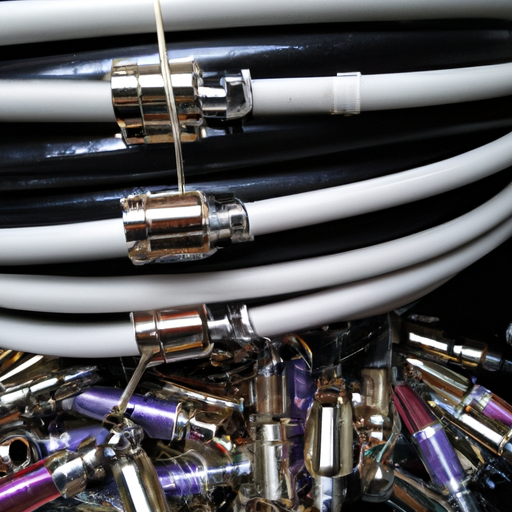
Multi-resonant antennas have become increasingly popular in recent years due to their ability to operate at multiple frequencies simultaneously. These antennas are capable of resonating at multiple frequencies, allowing for increased bandwidth and improved performance in a variety of applications. In this article, we will discuss the latest specifications and advancements in multi-resonant antennas.One of the key features of multi-resonant antennas is their ability to operate at multiple frequencies with high efficiency. This is achieved through the use of multiple resonant elements, each tuned to a specific frequency. By carefully designing the antenna structure and tuning the resonant elements, it is possible to achieve high efficiency and low cross-coupling between the different resonant modes.The latest multi-resonant antennas are designed to cover a wide range of frequencies, from a few megahertz to several gigahertz. This makes them suitable for a wide range of applications, including wireless communication, radar systems, and satellite communication. In addition, these antennas are often compact in size, making them ideal for use in portable devices and small form factor applications.One of the key challenges in designing multi-resonant antennas is achieving good isolation between the different resonant modes. Cross-coupling between the resonant elements can lead to interference and reduced performance. To address this issue, designers use techniques such as electromagnetic bandgap structures, decoupling networks, and isolation elements to minimize cross-coupling and improve the overall performance of the antenna.Another important consideration in multi-resonant antenna design is the impedance matching. The antenna must be matched to the impedance of the transmission line or the RF circuit to ensure maximum power transfer and efficiency. This is typically achieved through the use of matching networks, such as baluns, transformers, and matching capacitors, which are carefully designed to match the impedance of the antenna to the impedance of the circuit.In terms of materials, the latest multi-resonant antennas are often made from high-performance dielectric materials, such as ceramics, polymers, and composites. These materials offer high dielectric constants, low loss tangents, and excellent mechanical properties, making them ideal for use in high-frequency applications. In addition, these materials are often lightweight and durable, making them suitable for use in portable and outdoor applications.One of the key advantages of multi-resonant antennas is their ability to provide increased bandwidth compared to traditional single-resonant antennas. By operating at multiple frequencies simultaneously, these antennas can cover a wider range of frequencies and support multiple communication standards. This makes them ideal for use in multi-band communication systems, where a single antenna can support multiple frequency bands.In conclusion, multi-resonant antennas offer a number of advantages over traditional single-resonant antennas, including increased bandwidth, improved performance, and compact size. The latest multi-resonant antennas are designed to cover a wide range of frequencies, with high efficiency and low cross-coupling between the resonant modes. By carefully designing the antenna structure, tuning the resonant elements, and using high-performance materials, designers can create antennas that meet the demanding requirements of modern communication systems.
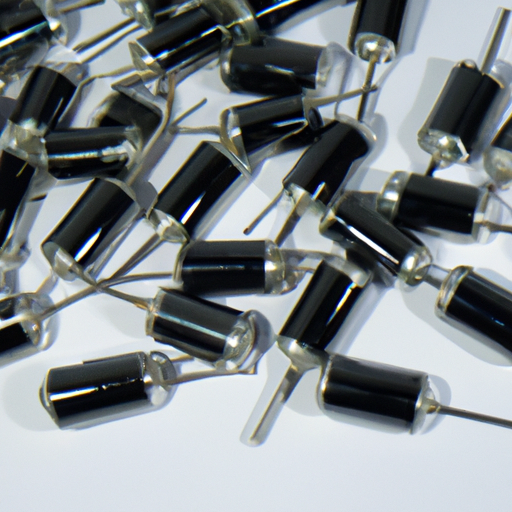
In recent years, converter manufacturing processes have seen significant advancements in technology and efficiency. These processes are crucial in the production of converters, which are devices used to convert one form of energy into another. From power converters used in electrical systems to catalytic converters in vehicles, the manufacturing processes have evolved to meet the increasing demands for performance, reliability, and sustainability.One of the latest trends in converter manufacturing processes is the use of advanced materials and coatings. These materials are designed to improve the efficiency and durability of converters, as well as reduce their environmental impact. For example, in the production of catalytic converters for vehicles, manufacturers are using new materials such as palladium, platinum, and rhodium to enhance the conversion of harmful emissions into less harmful substances. These materials are also being coated with special catalysts to improve their performance and longevity.Another key development in converter manufacturing processes is the use of additive manufacturing, also known as 3D printing. This technology allows manufacturers to create complex geometries and structures that are not possible with traditional manufacturing methods. Additive manufacturing is being used to produce components for converters with higher precision and efficiency, leading to improved performance and reduced production costs. This technology is also enabling manufacturers to create customized converters for specific applications, further enhancing their functionality and reliability.Furthermore, automation and robotics are playing a crucial role in modern converter manufacturing processes. These technologies are being used to streamline production processes, increase productivity, and improve quality control. Automated systems are being implemented to handle tasks such as assembly, testing, and inspection, reducing the need for manual labor and minimizing the risk of errors. Robotics are also being used to perform repetitive and dangerous tasks, ensuring the safety of workers and improving overall efficiency.In addition to advanced materials, additive manufacturing, and automation, sustainability is a key focus in modern converter manufacturing processes. Manufacturers are increasingly adopting eco-friendly practices to reduce their environmental footprint and meet regulatory requirements. This includes using recycled materials, optimizing energy consumption, and implementing waste reduction strategies. By incorporating sustainable practices into their manufacturing processes, companies are not only reducing their impact on the environment but also improving their reputation and attracting environmentally conscious customers.Overall, the latest converter manufacturing processes are characterized by innovation, efficiency, and sustainability. By leveraging advanced materials, additive manufacturing, automation, and sustainability practices, manufacturers are able to produce high-quality converters that meet the demands of today's market. These advancements are driving the industry forward and shaping the future of converter manufacturing. As technology continues to evolve, we can expect to see even more exciting developments in the field of converter manufacturing, leading to improved performance, reliability, and sustainability.

The market outlook for decoders is promising as the demand for digital content continues to grow. Decoders play a crucial role in converting digital signals into a format that can be displayed on a screen, making them essential for accessing a wide range of content, including television programs, movies, and online streaming services.One of the key drivers of the decoder market is the increasing adoption of high-definition and ultra-high-definition content. As more consumers upgrade to high-resolution displays, there is a growing need for decoders that can support these formats and deliver a superior viewing experience. This trend is expected to continue in the coming years, driving demand for advanced decoders with enhanced processing capabilities.Another factor contributing to the growth of the decoder market is the rise of streaming services. With the proliferation of platforms like Netflix, Hulu, and Amazon Prime Video, consumers are increasingly turning to online content for their entertainment needs. Decoders that can connect to these services and deliver seamless streaming experiences are in high demand, driving innovation in the market.In addition, the increasing availability of 4K and 8K content is expected to drive demand for decoders that can support these formats. As content creators continue to push the boundaries of resolution and image quality, consumers are looking for decoders that can deliver the best possible viewing experience. This presents an opportunity for manufacturers to develop cutting-edge decoders that can meet the demands of the market.The growing popularity of smart TVs is also expected to drive growth in the decoder market. Smart TVs come equipped with built-in decoders that allow users to access a wide range of content directly from their television sets. However, there is still a significant market for standalone decoders, particularly among consumers who prefer to upgrade their existing TVs rather than purchase new ones. This presents an opportunity for manufacturers to target this segment of the market with innovative decoder solutions.One of the challenges facing the decoder market is the increasing competition from streaming devices like Roku, Apple TV, and Google Chromecast. These devices offer a convenient way to access online content without the need for a traditional decoder, posing a threat to the market. However, there is still a significant market for decoders, particularly among consumers who value the flexibility and customization options that standalone decoders provide.Overall, the market outlook for decoders is positive, with strong demand expected to drive growth in the coming years. Manufacturers that can innovate and develop advanced decoder solutions to meet the evolving needs of consumers are well-positioned to capitalize on this growing market. As the demand for high-resolution content, streaming services, and smart TVs continues to rise, decoders will play a crucial role in delivering a superior viewing experience for consumers around the world.
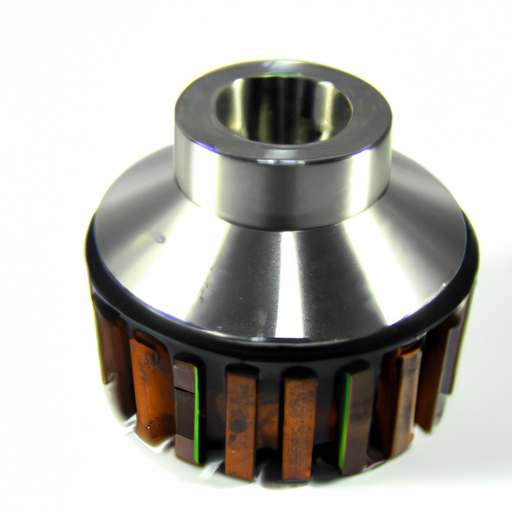
In the world of technology, encoders play a crucial role in various industries such as robotics, automation, and manufacturing. Encoders are devices that convert motion into an electrical signal that can be read by a control system. They are used to measure the position, speed, and direction of a rotating shaft or linear motion.As technology continues to advance, the demand for more accurate and reliable encoders has increased. Manufacturers are constantly developing new encoder specifications to meet the evolving needs of their customers. In this article, we will discuss the latest encoder specifications and how they are improving the performance of various applications.ResolutionOne of the most important specifications of an encoder is its resolution, which determines the level of detail in the measurement of position or motion. The resolution of an encoder is typically measured in pulses per revolution (PPR) for rotary encoders or pulses per inch (PPI) for linear encoders. Higher resolution encoders provide more precise measurements, allowing for better control and accuracy in motion control systems.The latest encoders on the market offer resolutions ranging from a few pulses per revolution to thousands of pulses per revolution. Some high-resolution encoders can even provide sub-micron accuracy, making them ideal for applications that require extremely precise positioning.AccuracyIn addition to resolution, accuracy is another important specification to consider when choosing an encoder. Accuracy refers to how closely the measured position or motion matches the actual position or motion of the shaft. Encoders with higher accuracy ratings provide more reliable and consistent measurements, leading to improved performance in motion control systems.The latest encoders are designed to provide high levels of accuracy, with some models offering accuracy ratings of up to 0.01% of the full scale. This level of accuracy is essential for applications that require precise positioning, such as in robotics, CNC machines, and medical devices.SpeedAnother key specification of an encoder is its maximum speed capability. The speed of an encoder is typically measured in revolutions per minute (RPM) for rotary encoders or inches per second for linear encoders. Encoders with higher speed ratings can accurately measure fast-moving objects without losing resolution or accuracy.The latest encoders are capable of measuring speeds ranging from a few hundred RPM to tens of thousands of RPM. Some high-speed encoders can even measure speeds exceeding 100,000 RPM, making them suitable for high-speed applications such as turbine monitoring, motor control, and aerospace systems.Environmental ProtectionEncoders are often used in harsh environments where they are exposed to dust, moisture, and extreme temperatures. To ensure reliable operation in these conditions, the latest encoders are designed to provide high levels of environmental protection. Encoders with IP65 or IP67 ratings are dust-tight and water-resistant, making them suitable for outdoor or industrial applications.Some encoders also feature extended temperature ranges, allowing them to operate in extreme temperatures ranging from -40°C to 100°C or higher. This level of environmental protection ensures that the encoder can withstand the rigors of the environment and continue to provide accurate measurements under challenging conditions.Communication InterfaceIn today's interconnected world, communication interfaces play a crucial role in the performance of encoders. The latest encoders are equipped with a variety of communication interfaces such as RS-485, Ethernet, and CAN bus, allowing them to easily integrate with different control systems and devices.Encoders with Ethernet interfaces enable real-time data transmission and remote monitoring, making them ideal for applications that require high-speed communication and data exchange. CAN bus interfaces allow for easy integration with automotive and industrial control systems, while RS-485 interfaces provide reliable communication over long distances.ConclusionIn conclusion, the latest encoder specifications are designed to meet the evolving needs of various industries by providing higher resolution, accuracy, speed, environmental protection, and communication interfaces. These advancements in encoder technology have enabled manufacturers to improve the performance of their motion control systems and achieve higher levels of precision and reliability.As technology continues to advance, we can expect to see further innovations in encoder design and functionality, leading to even more advanced and capable encoders in the future. By staying informed about the latest encoder specifications, engineers and designers can choose the right encoder for their specific application and ensure optimal performance and efficiency in their systems.

Latches are an essential component in various industries, including construction, automotive, and furniture manufacturing. They are used to secure doors, cabinets, and other types of enclosures. Latches come in a variety of shapes, sizes, and materials, but they all serve the same basic function of keeping things closed and secure.Product standards for latches are important to ensure that they meet certain quality and safety requirements. These standards are set by organizations such as the American National Standards Institute (ANSI), the International Organization for Standardization (ISO), and the European Committee for Standardization (CEN). These standards cover a wide range of criteria, including materials, dimensions, performance, and testing methods.One of the most important aspects of latch standards is the materials used in their construction. Latches are typically made from materials such as steel, aluminum, brass, or plastic. The material used will depend on the application and the level of security required. For example, a latch used on a high-security door may be made from steel, while a latch used on a cabinet may be made from plastic.In addition to materials, latch standards also cover dimensions and performance requirements. Latches must be designed to fit the specific application they are intended for. This includes considerations such as the size of the door or cabinet, the amount of force required to open or close the latch, and the level of security needed. Latches must also be tested to ensure that they meet these requirements and perform as expected.Testing methods for latches are another important aspect of product standards. Latches must undergo various tests to ensure that they meet performance requirements and are safe to use. These tests may include tests for durability, corrosion resistance, and security. Latches must also be tested to ensure that they can withstand certain levels of force and pressure without failing.In addition to materials, dimensions, performance, and testing, latch standards also cover other aspects such as installation requirements and maintenance. Latches must be installed correctly to ensure that they function properly and provide the necessary level of security. They must also be maintained regularly to ensure that they continue to perform as expected.Overall, product standards for latches are essential to ensure that they meet certain quality and safety requirements. These standards cover a wide range of criteria, including materials, dimensions, performance, and testing methods. By adhering to these standards, manufacturers can ensure that their latches are safe, reliable, and effective in securing doors, cabinets, and other types of enclosures.
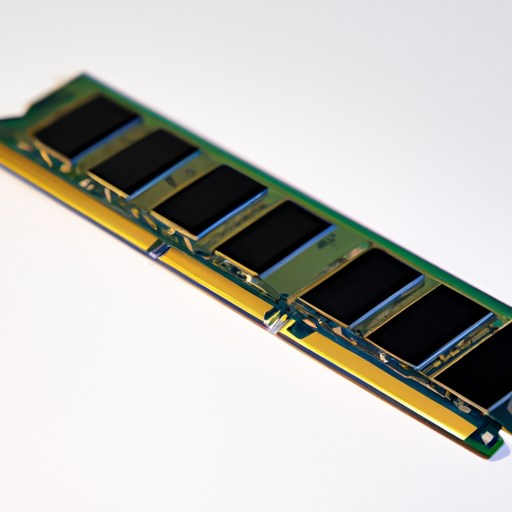
First-In-First-Out (FIFO) memory is a type of memory storage device that stores and retrieves data in the order it was received. This type of memory is commonly used in various applications where data needs to be processed in a sequential manner. There are several popular types of FIFO memory products available in the market, each with its own unique features and capabilities. In this article, we will discuss some of the popular FIFO memory product types and their applications.1. Asynchronous FIFO Memory:
Asynchronous FIFO memory is one of the most commonly used types of FIFO memory products. It operates independently of a clock signal and is designed to store and retrieve data in a non-synchronous manner. Asynchronous FIFO memory is typically used in applications where data is received at irregular intervals or where timing constraints are not critical. This type of memory is often used in communication systems, data acquisition systems, and other applications where data needs to be processed in a flexible and efficient manner.2. Synchronous FIFO Memory:
Synchronous FIFO memory is another popular type of FIFO memory product. Unlike asynchronous FIFO memory, synchronous FIFO memory operates using a clock signal to control the data transfer process. This type of memory is commonly used in applications where timing constraints are critical and where data needs to be processed at a specific rate. Synchronous FIFO memory is often used in high-speed communication systems, digital signal processing applications, and other applications where precise timing is essential.3. Dual-Port FIFO Memory:
Dual-port FIFO memory is a type of FIFO memory product that features two separate data ports for simultaneous read and write operations. This type of memory is commonly used in applications where data needs to be accessed by multiple devices or processes simultaneously. Dual-port FIFO memory is often used in multi-processor systems, networking equipment, and other applications where high-speed data transfer is required.4. Programmable FIFO Memory:
Programmable FIFO memory is a type of FIFO memory product that allows users to configure the memory size, data width, and other parameters according to their specific requirements. This type of memory is highly flexible and can be customized to meet the needs of a wide range of applications. Programmable FIFO memory is often used in prototyping, testing, and other applications where flexibility and customization are essential.5. FIFO Memory with Error Detection and Correction:
FIFO memory products with error detection and correction capabilities are designed to detect and correct errors in the data stored in the memory. This type of memory is commonly used in applications where data integrity is critical, such as in aerospace, defense, and medical systems. FIFO memory with error detection and correction features can help ensure the reliability and accuracy of data processing in these applications.6. FIFO Memory with Real-Time Data Processing:
FIFO memory products with real-time data processing capabilities are designed to process data in real-time, without any delays or interruptions. This type of memory is commonly used in applications where time-critical data processing is required, such as in industrial automation, robotics, and control systems. FIFO memory with real-time data processing features can help ensure the timely and accurate processing of data in these applications.In conclusion, FIFO memory is a versatile and widely used type of memory storage device that is essential for a wide range of applications. There are several popular types of FIFO memory products available in the market, each with its own unique features and capabilities. Whether you need asynchronous FIFO memory for flexible data processing, synchronous FIFO memory for precise timing control, dual-port FIFO memory for simultaneous data access, programmable FIFO memory for customization, FIFO memory with error detection and correction for data integrity, or FIFO memory with real-time data processing for time-critical applications, there is a FIFO memory product available to meet your specific requirements.

Triggers are a powerful tool in the world of technology and software development. They are used to automate tasks, enforce business rules, and maintain data integrity in databases. Triggers are essentially a set of instructions that are executed automatically when a specified event occurs in a database. These events can include insertions, updates, and deletions of data in tables.The main application direction of triggers is in database management systems. Triggers are commonly used in relational database management systems (RDBMS) such as MySQL, Oracle, SQL Server, and PostgreSQL. They are an essential component of these systems as they help in maintaining the consistency and integrity of the data stored in the database.There are two main types of triggers: row-level triggers and statement-level triggers. Row-level triggers are executed for each row that is affected by the triggering event, while statement-level triggers are executed once for each triggering event. Triggers can be defined to execute before or after the triggering event, depending on the requirements of the application.One of the main applications of triggers is in enforcing business rules. Triggers can be used to enforce constraints on the data stored in the database, such as ensuring that certain fields are not null or that values fall within a specified range. For example, a trigger can be defined to prevent the insertion of a new record if it violates a business rule, such as a customer's age being less than 18 years.Triggers are also commonly used to maintain data integrity in databases. They can be used to automatically update related tables when a record is inserted, updated, or deleted in a table. This helps in ensuring that the data remains consistent and accurate across different tables in the database.Another important application of triggers is in auditing and logging changes to the database. Triggers can be defined to log all changes made to a table, including the user who made the change, the timestamp of the change, and the old and new values of the affected fields. This information can be useful for tracking changes, troubleshooting issues, and ensuring accountability in the database.Triggers can also be used to automate tasks in the database. For example, a trigger can be defined to send an email notification whenever a new record is inserted into a table. This can be useful for alerting users or administrators about important events in the database.In addition to these applications, triggers can also be used for data validation, data transformation, and data synchronization. They provide a flexible and powerful mechanism for customizing the behavior of a database and implementing complex business logic.Despite their usefulness, triggers should be used judiciously as they can introduce complexity and overhead to the database. Improperly designed triggers can lead to performance issues, data inconsistencies, and maintenance challenges. It is important to carefully plan and test triggers before deploying them in a production environment.In conclusion, triggers are a valuable tool in database management systems for automating tasks, enforcing business rules, maintaining data integrity, and auditing changes. They provide a powerful mechanism for customizing the behavior of a database and implementing complex business logic. By understanding the main application direction of triggers and using them effectively, developers can enhance the functionality and reliability of their databases.
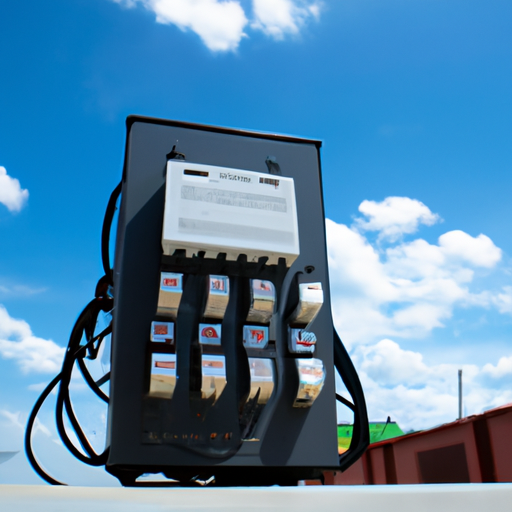
Inverters are an essential component of many modern electronic devices and systems. They are used to convert direct current (DC) power into alternating current (AC) power, allowing for the operation of devices that require AC power. Inverters are commonly used in a wide range of applications, including solar power systems, electric vehicles, and backup power systems.There are several key product features that differentiate inverters from one another and determine their performance and suitability for specific applications. In this article, we will explore some of the most important product features of inverters and discuss how they impact their functionality and performance.1. Power Output: One of the most important product features of an inverter is its power output capacity. This is typically measured in watts and determines the maximum amount of power that the inverter can deliver to connected devices. Inverters are available in a wide range of power ratings, from small portable inverters that can power a few small devices to large industrial-grade inverters that can power entire buildings.2. Waveform: Another important product feature of inverters is the waveform of the AC output they produce. There are two main types of waveforms that inverters can produce: pure sine wave and modified sine wave. Pure sine wave inverters produce a smooth and consistent waveform that is similar to the AC power supplied by utility companies, making them suitable for sensitive electronic devices. Modified sine wave inverters produce a less smooth waveform that may cause issues with some devices, but they are generally more affordable.3. Efficiency: The efficiency of an inverter is a measure of how effectively it converts DC power into AC power. Higher efficiency inverters waste less power during the conversion process, resulting in lower operating costs and longer battery life in off-grid applications. Inverters with higher efficiency ratings are generally more expensive but can provide significant long-term savings.4. Input Voltage Range: Inverters are designed to work with specific input voltage ranges, typically 12V, 24V, or 48V DC. It is important to choose an inverter that is compatible with the voltage of the power source it will be connected to, whether it is a battery, solar panel, or other power source. Some inverters are also capable of accepting a wider input voltage range, providing greater flexibility in system design.5. Output Voltage and Frequency: In addition to the waveform, the output voltage and frequency of an inverter are important product features to consider. The output voltage should match the requirements of the devices being powered, while the output frequency should match the standard frequency of the electrical grid in the region where the inverter will be used.6. Protection Features: Inverters often include a variety of protection features to safeguard against electrical faults and ensure the safety of connected devices. Common protection features include overvoltage protection, undervoltage protection, overcurrent protection, and short circuit protection. Some inverters also include temperature sensors and cooling fans to prevent overheating.7. Monitoring and Control: Many modern inverters include monitoring and control features that allow users to monitor the performance of the inverter and adjust its settings as needed. This may include digital displays, remote monitoring capabilities, and programmable settings for voltage, frequency, and other parameters.8. Size and Weight: The physical size and weight of an inverter are important considerations, especially in portable or space-constrained applications. Smaller and lighter inverters are easier to transport and install, but may have lower power output capacities. Larger inverters are typically more powerful but may be more difficult to handle and install.In conclusion, inverters are versatile and essential devices that play a crucial role in many electronic systems. When choosing an inverter, it is important to consider a range of product features, including power output, waveform, efficiency, input voltage range, output voltage and frequency, protection features, monitoring and control capabilities, and size and weight. By carefully evaluating these features and selecting an inverter that meets the specific requirements of the application, users can ensure reliable and efficient operation of their electronic devices and systems.
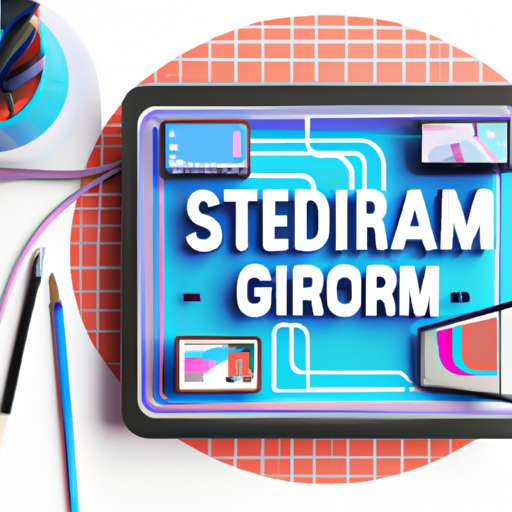
Grid models are a popular choice for many consumers looking for a comfortable and supportive mattress. However, with so many options available on the market, it can be overwhelming to choose the right one for your needs. In this article, we will explore the differences between mainstream Grid models to help you make an informed decision.One of the most well-known Grid models is the Purple mattress. Purple uses a unique Grid technology that is designed to provide both support and pressure relief. The Grid is made of a hyper-elastic polymer material that is arranged in a grid pattern, allowing it to flex and adapt to the shape of your body. This helps to distribute your weight evenly and reduce pressure points, making it a great option for those who suffer from back pain or other discomforts.Another popular Grid model is the Tuft & Needle Mint mattress. This mattress features a Grid-like foam layer that is designed to provide support and comfort. The foam is infused with cooling gel beads to help regulate temperature and keep you cool throughout the night. The Mint mattress also has a responsive foam layer that contours to your body, providing a comfortable and supportive sleep surface.The Casper Wave Hybrid mattress is another mainstream Grid model that offers a unique combination of support and comfort. This mattress features a layer of responsive foam that is designed to contour to your body and provide pressure relief. The Wave Hybrid also has a layer of pocketed coils that help to provide additional support and reduce motion transfer, making it a great option for couples or those who sleep with a partner.The Saatva Loom & Leaf mattress is a luxury Grid model that is designed to provide a plush and supportive sleep surface. This mattress features a layer of high-density memory foam that is designed to contour to your body and provide pressure relief. The Loom & Leaf also has a layer of cooling gel foam that helps to regulate temperature and keep you cool throughout the night.In conclusion, there are many mainstream Grid models available on the market, each offering a unique combination of support and comfort. Whether you prefer the unique Grid technology of the Purple mattress, the cooling gel foam of the Tuft & Needle Mint mattress, the pocketed coils of the Casper Wave Hybrid mattress, or the luxury memory foam of the Saatva Loom & Leaf mattress, there is a Grid model out there to suit your needs. By considering the differences between these mainstream Grid models, you can make an informed decision and choose the right mattress for a restful night's sleep.
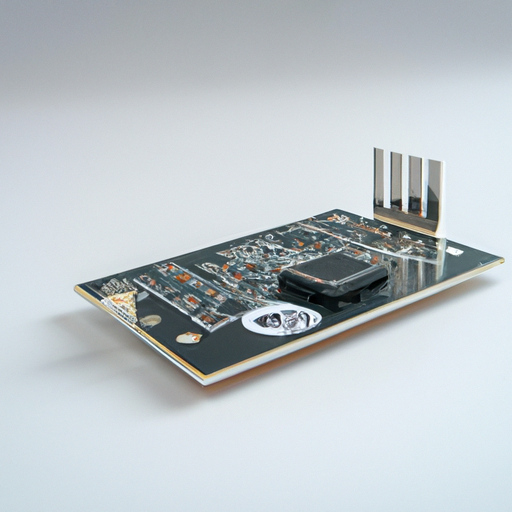
A transceiver is a device that combines both transmitter and receiver functionalities in a single unit. It is commonly used in telecommunications and networking to transmit and receive data over a communication channel. Transceivers are essential components in various communication systems, including radios, televisions, mobile phones, and computer networks.Transceivers come in different forms and sizes, depending on the specific application and requirements. They can be found in handheld devices, such as walkie-talkies and smartphones, as well as in larger systems, such as satellite communication systems and data centers. Regardless of the size or complexity, transceivers share some common features that make them essential for modern communication systems.One of the key features of a transceiver is its ability to transmit and receive data simultaneously. This means that the device can send and receive signals over the same communication channel, allowing for two-way communication. This feature is crucial in many applications, such as telephony, video conferencing, and data transfer, where real-time communication is essential.Another important feature of transceivers is their ability to modulate and demodulate signals. Modulation is the process of encoding information onto a carrier signal for transmission, while demodulation is the process of extracting the original information from the received signal. Transceivers use various modulation techniques, such as amplitude modulation (AM), frequency modulation (FM), and phase modulation (PM), to encode and decode data.Transceivers also feature signal processing capabilities, which allow them to filter, amplify, and process incoming and outgoing signals. Signal processing is essential for improving the quality of communication and reducing interference and noise. Transceivers may include filters, amplifiers, and digital signal processors (DSPs) to enhance signal quality and reliability.Transceivers are often equipped with multiple communication interfaces, such as Ethernet, USB, and serial ports, to connect to different devices and networks. These interfaces allow transceivers to communicate with a wide range of devices, such as computers, routers, and servers, using various communication protocols. Transceivers may also support wireless communication standards, such as Wi-Fi, Bluetooth, and cellular networks, to enable wireless connectivity.In addition to communication interfaces, transceivers may include built-in antennas for transmitting and receiving signals wirelessly. Antennas are essential for wireless communication systems, as they allow transceivers to send and receive signals over long distances without the need for physical cables. Transceivers may use different types of antennas, such as dipole antennas, patch antennas, and helical antennas, depending on the application and frequency band.Transceivers also feature power management capabilities to optimize energy consumption and extend battery life. Power management is crucial for portable devices, such as smartphones and laptops, as it allows them to operate for longer periods without recharging. Transceivers may include power-saving modes, voltage regulators, and energy-efficient components to reduce power consumption and maximize battery life.Security is another important feature of transceivers, especially in wireless communication systems. Transceivers may include encryption and authentication mechanisms to secure data transmission and prevent unauthorized access. Encryption algorithms, such as Advanced Encryption Standard (AES) and Secure Sockets Layer (SSL), are commonly used to protect sensitive information from eavesdropping and hacking.Overall, transceivers play a vital role in modern communication systems by enabling reliable and efficient data transmission. Their features, such as simultaneous transmission and reception, modulation and demodulation, signal processing, communication interfaces, antennas, power management, and security, make them essential for a wide range of applications. As technology continues to evolve, transceivers will continue to advance and adapt to meet the growing demands of the communication industry.

The market outlook for receivers in the current economic climate is a topic of interest for many investors and industry experts. Receivers play a crucial role in the financial world, acting as intermediaries between creditors and debtors in cases of insolvency or financial distress. As such, the demand for receivers is closely tied to the overall health of the economy and the prevalence of corporate bankruptcies and restructurings.In recent years, the global economy has experienced significant volatility and uncertainty, with the COVID-19 pandemic causing widespread disruptions to businesses and financial markets. As a result, the demand for receivers has increased as companies struggle to stay afloat and creditors seek to recover their investments. In this article, we will explore the current market outlook for receivers, including key trends, challenges, and opportunities in the industry.Trends in the Receiver MarketOne of the key trends shaping the receiver market is the increasing complexity of insolvency cases. As businesses become more interconnected and globalized, insolvency proceedings often involve multiple jurisdictions, complex financial structures, and diverse stakeholders. Receivers are required to navigate these complexities and ensure that the interests of all parties are protected.Another trend in the receiver market is the growing demand for specialized expertise. Receivers are expected to have a deep understanding of financial markets, legal frameworks, and industry-specific issues in order to effectively manage insolvency cases. As a result, there is a growing need for receivers with specialized skills and experience in areas such as restructuring, forensic accounting, and asset recovery.Challenges Facing ReceiversDespite the opportunities in the receiver market, there are also several challenges that receivers must navigate in order to be successful. One of the main challenges is the increasing competition in the industry. As the demand for receivers grows, more professionals are entering the field, leading to greater competition for assignments and pressure on fees.Another challenge facing receivers is the regulatory environment. Insolvency proceedings are subject to a complex web of laws and regulations, which can vary significantly from jurisdiction to jurisdiction. Receivers must stay abreast of these regulatory changes and ensure compliance in order to avoid legal risks and liabilities.Opportunities for ReceiversDespite the challenges facing receivers, there are also significant opportunities for growth and success in the industry. One of the main opportunities is the increasing demand for receivers in emerging markets. As economies in regions such as Asia, Latin America, and Africa continue to grow, the number of insolvency cases is expected to rise, creating new opportunities for receivers to expand their business globally.Another opportunity for receivers is the growing demand for alternative dispute resolution mechanisms. In recent years, there has been a trend towards resolving insolvency cases through mediation, arbitration, and other alternative methods, rather than traditional court proceedings. Receivers who are able to offer expertise in these areas can differentiate themselves in the market and attract new clients.ConclusionIn conclusion, the market outlook for receivers is influenced by a range of factors, including economic conditions, regulatory changes, and industry trends. While there are challenges facing receivers, such as increasing competition and regulatory complexity, there are also significant opportunities for growth and success in the industry. By staying abreast of key trends, developing specialized expertise, and adapting to changing market conditions, receivers can position themselves for success in the dynamic and evolving world of insolvency and restructuring.

When it comes to driving, having the right tools and equipment is essential for a safe and comfortable journey. One of the most important tools for any driver is their driver, which is a crucial component of their vehicle. In this article, we will explore the various product features of a driver and why it is important to have a high-quality driver.1. Comfortable grip: One of the most important features of a driver is its grip. A driver with a comfortable grip allows the driver to have better control over the vehicle and reduces the risk of hand fatigue during long drives. Look for a driver with a rubberized grip or ergonomic design for maximum comfort.2. Durable construction: A driver is a tool that is used frequently and can undergo a lot of wear and tear. It is important to choose a driver that is made of high-quality materials such as steel or chrome vanadium for durability and longevity. A durable driver will last longer and provide reliable performance for years to come.3. Magnetic tip: A driver with a magnetic tip is a convenient feature that allows the driver to easily pick up and hold screws or other small metal objects. This can save time and effort when working on projects that require precise placement of screws or fasteners.4. Variety of sizes: A good driver set should include a variety of sizes to accommodate different types of screws and fasteners. Look for a driver set that includes both flathead and Phillips head drivers in various sizes to ensure that you have the right tool for any job.5. Precision tips: Precision tips are essential for driving screws with accuracy and precision. Look for drivers with precision-machined tips that fit snugly into screw heads to prevent slipping and stripping. This will ensure that you can tighten or loosen screws without damaging them.6. Anti-corrosion coating: Drivers are often exposed to moisture and other elements that can cause rust and corrosion over time. Look for drivers with an anti-corrosion coating or finish to protect them from rust and extend their lifespan.7. Storage case: To keep your drivers organized and easily accessible, look for a driver set that comes with a storage case or pouch. This will help you keep track of your drivers and prevent them from getting lost or damaged.8. Warranty: A good driver should come with a warranty to protect against defects in materials or workmanship. Look for drivers from reputable brands that offer a warranty to ensure that you are getting a high-quality product.In conclusion, a driver is an essential tool for any driver and having the right features can make a big difference in the quality of your driving experience. By choosing a driver with a comfortable grip, durable construction, magnetic tip, variety of sizes, precision tips, anti-corrosion coating, storage case, and warranty, you can ensure that you have a reliable and long-lasting tool for all your driving needs. Invest in a high-quality driver today and enjoy the benefits of a safe and comfortable driving experience.
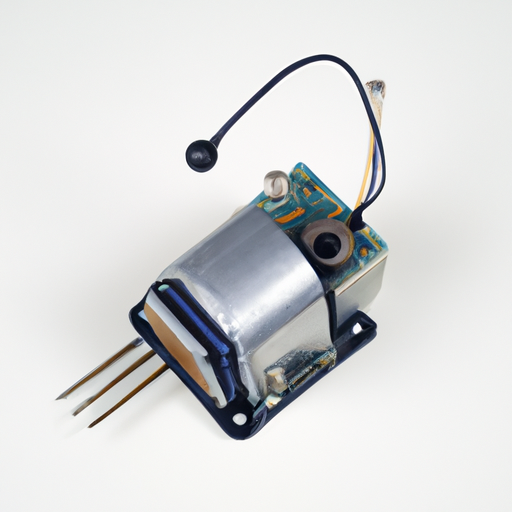
Hot spot buffer models are essential tools for managing network traffic and ensuring a smooth and efficient flow of data. These devices help to prevent network congestion and improve overall performance by prioritizing and controlling the flow of data packets. With the increasing demand for high-speed internet and the growing number of connected devices, hot spot buffer models have become a crucial component of modern network infrastructure.When it comes to pricing, hot spot buffer models can vary significantly depending on the brand, features, and specifications. In general, these devices can range from a few hundred dollars to several thousand dollars. The price of a hot spot buffer model is typically determined by factors such as the number of ports, data transfer speeds, and advanced features such as Quality of Service (QoS) capabilities.One of the most popular hot spot buffer models on the market is the Ubiquiti UniFi Dream Machine (UDM). This all-in-one device combines a router, switch, and access point into a single unit, making it a cost-effective solution for small to medium-sized businesses. The UDM offers advanced features such as deep packet inspection, intrusion detection, and automatic QoS, making it an ideal choice for businesses looking to optimize their network performance.The price of the Ubiquiti UniFi Dream Machine starts at around $299, making it a budget-friendly option for businesses looking to upgrade their network infrastructure. However, for larger enterprises with more demanding network requirements, there are higher-end hot spot buffer models available that offer greater performance and scalability.For example, the Cisco Catalyst 9000 Series switches are designed for high-performance networking and offer advanced features such as programmable ASICs, deep packet inspection, and intelligent traffic management. These switches are ideal for large enterprises with complex network environments and high data transfer requirements. The price of the Cisco Catalyst 9000 Series switches can range from $1,000 to $10,000 or more, depending on the specific model and configuration.In addition to the hardware cost, businesses also need to consider the ongoing maintenance and support costs associated with hot spot buffer models. Many manufacturers offer support and maintenance packages that include regular software updates, technical support, and warranty coverage. These services can add to the overall cost of owning a hot spot buffer model but are essential for ensuring the continued performance and reliability of the device.Overall, the price of hot spot buffer models can vary widely depending on the brand, features, and specifications. Businesses should carefully evaluate their network requirements and budget constraints when selecting a hot spot buffer model to ensure they choose a solution that meets their needs and provides the best value for their investment. With the right hot spot buffer model in place, businesses can optimize their network performance, improve data flow, and enhance overall productivity.